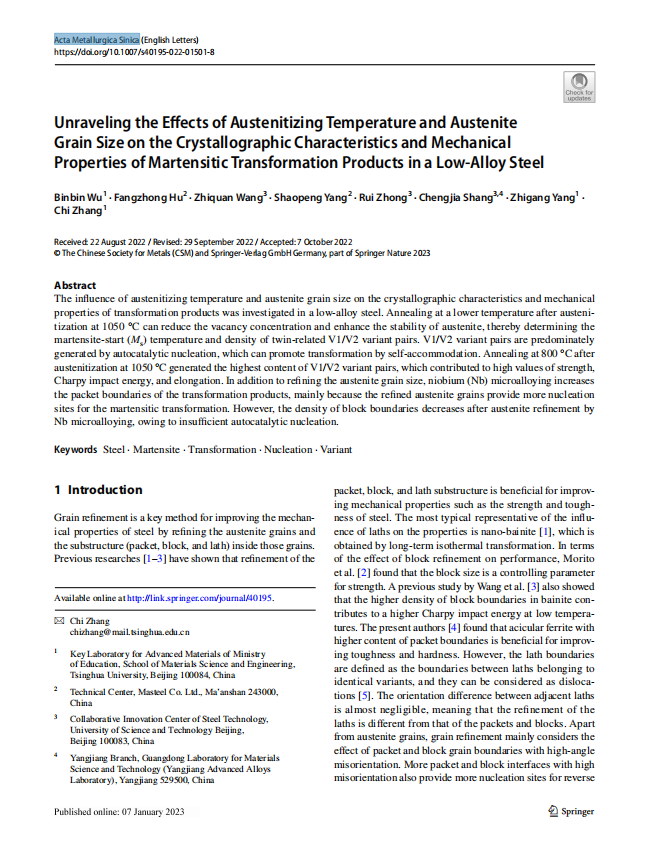The influence of austenitizing temperature and austenite grain size on the crystallographic characteristics and mechanical properties of transformation products was investigated in a low-alloy steel. Annealing at a lower temperature after austenitization at 1050 °C can reduce the vacancy concentration and enhance the stability of austenite, thereby determining the martensite-start (Ms) temperature and density of twin-related V1/V2 variant pairs. V1/V2 variant pairs are predominately generated by autocatalytic nucleation, which can promote transformation by self-accommodation. Annealing at 800 °C after austenitization at 1050 °C generated the highest content of V1/V2 variant pairs, which contributed to high values of strength, Charpy impact energy, and elongation. In addition to refining the austenite grain size, niobium (Nb) microalloying increases the packet boundaries of the transformation products, mainly because the refined austenite grains provide more nucleation sites for the martensitic transformation. However, the density of block boundaries decreases after austenite refinement by Nb microalloying, owing to insufficient autocatalytic nucleation.
